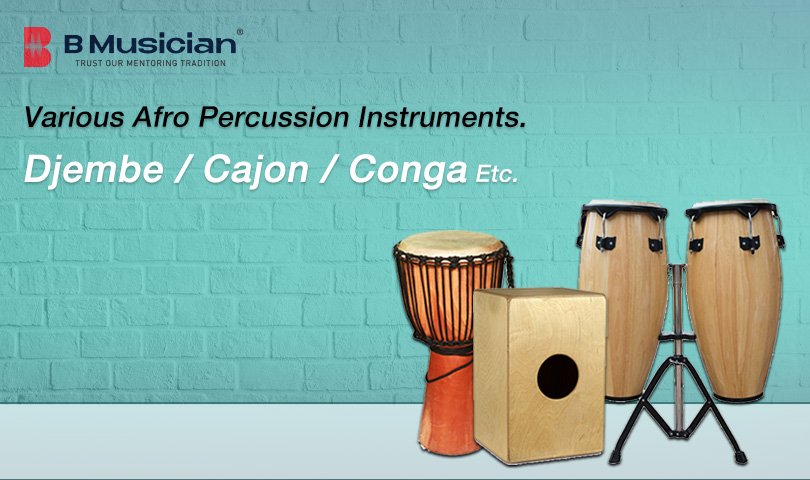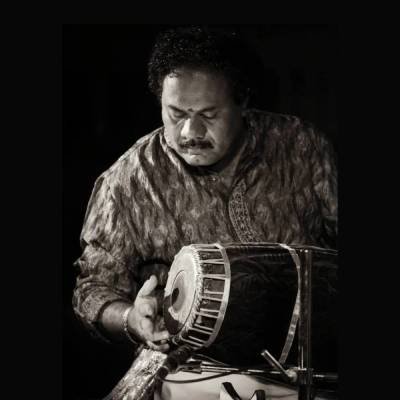Exploring Afro Percussion Instruments: A Journey Through Rhythm and Culture
Africa is a continent rich in cultural heritage, and one of its most significant contributions to the world of music is percussion. Afro percussion instruments have influenced global music, infusing it with deep rhythms and vibrant energy. Instruments such as the Cajon, Djembe, and Conga each carry a unique history and a distinctive approach to rhythm and performance. This blog will explore the origins, history, and learning methodologies of various Afro percussion instruments. Whether you’re looking for online drum lessons, online Cajon lessons, online Djembe lessons, or online Conga lessons, this guide will provide valuable insights into these fascinating instruments.
The Djembe Origin and History
Approach to Learning and Performance
Learning to play the Djembe involves understanding its three primary sounds:
Bass – Achieved by striking the center of the drum with an open palm.
Tone – Played by striking the drum near the rim with fingers slightly curved.
Slap – A sharp, high-pitched sound made with fingers close to the edge.
The Djembe is traditionally taught through oral transmission and demonstration, with students learning by imitating their instructors. Rhythms are often played in ensembles, with different parts interweaving to create a polyrhythmic tapestry.
The Conga Origin and History
Approach to Learning and Performance
Playing the Conga involves a variety of hand techniques, including:
- Open Tone – Struck with fingers and palm to create a clear, resonant sound.
- Muffled Tone – Hand remains on the drumhead to dampen the sound.
- Slap – A sharp, high-pitched sound similar to the Djembe.
- Bass Tone – A deep sound produced by striking the center with the full palm.
The Cajon Origin and History
Approach to Learning and Performance
The Cajon is played by striking different areas of the front panel (tapa) to produce distinct sounds:
- Bass – Achieved by striking the center of the panel with the palm.
- Snare – Played near the top edge, producing a crisp, snappy sound.
- Taps and Ghost Notes – Light strokes used to add subtle rhythmic texture.
The Talking Drum Origin and History
Approach to Learning and Performance
- Pressing and Releasing – To control pitch by adjusting the tension on the drumhead.
- Open and Closed Strokes – To create contrasting sounds.
- Call and Response – A fundamental concept in West African drumming.
The Bata Drum Origin and History
The Bata drum is deeply rooted in Yoruba culture and is primarily used in religious
ceremonies related to the Orisha worship in Nigeria and Cuba. The drum set consists of three different sizes: Iya (largest), Itotele (medium), and Okonkolo (smallest), each playing interlocking rhythms.
Bata drums are traditionally carved from wood and feature two drumheads, allowing for a wide variety of tones. The rhythms played on Bata drums are highly complex and spiritually significant.
Approach to Learning and Performance
- Open and Muffled Tones – Produced with both hands.
- Slaps and Rolls – Used to add dynamic accents.
- Chants and Songs – Often accompany drumming in religious contexts.
Understanding the diverse properties of Afro percussion instruments:
| Instrument | Origin | Features | Application |
|---|---|---|---|
| Conga | Afro-Cuban | Tall, narrow, single-headed drum made of wood or fiberglass | Used extensively in Latin music, including salsa and rumba |
| Cajon | Afro-Peruvian | Rectangular wooden box drum with internal snares | Originally made from repurposed shipping crates |
| Djembe | West African | Goblet-shaped drum with goat skin head | It can produce a wide range of tones from bass to slap |
| Bata Drum | Nigerian | Double-headed drums used in religious ceremonies | Played in sets of three with different pitch ranges |
| Talking Drum | West African | Hourglass-shaped drum with adjustable tension cords | Mimics human speech through pitch modulation |
Conclusion
Afro percussion instruments such as the Djembe, Conga, Cajon, Talking Drum, and Bata drums each offer a unique gateway into the rich rhythmic traditions of Africa and the African diaspora. Whether used in ceremonial settings, social gatherings, or contemporary music, these instruments continue to inspire and connect people through rhythm. If you’re eager to learn, consider taking online drum lessons, online Cajon lessons, online Conga lessons, or online Djembe lessons to develop your skills and deepen your appreciation for these culturally rich instruments.


















